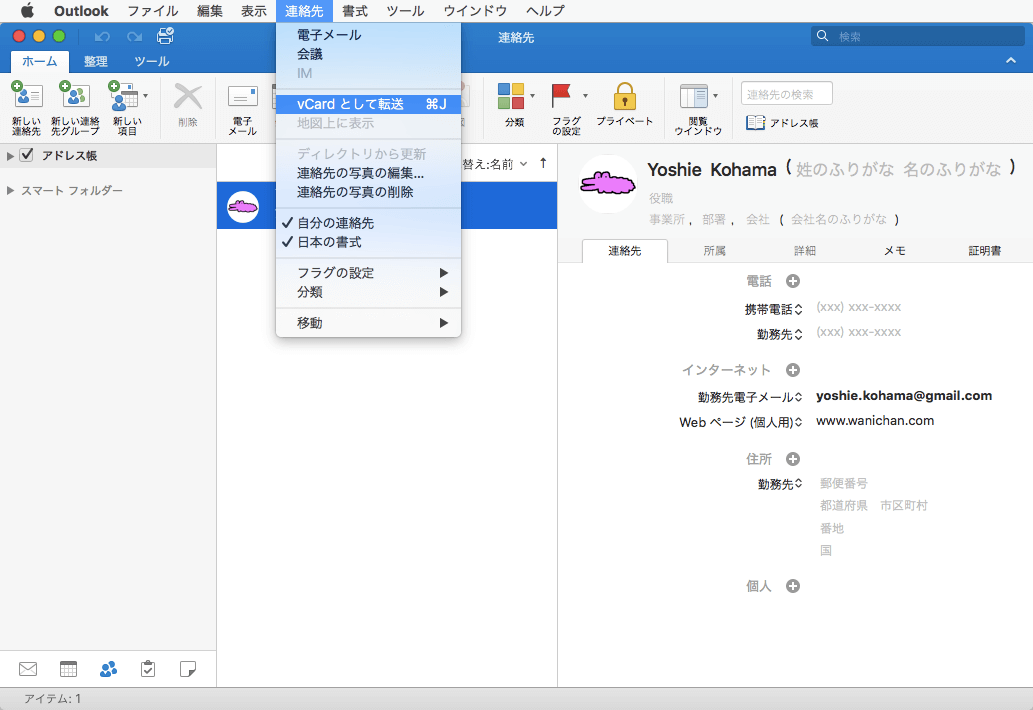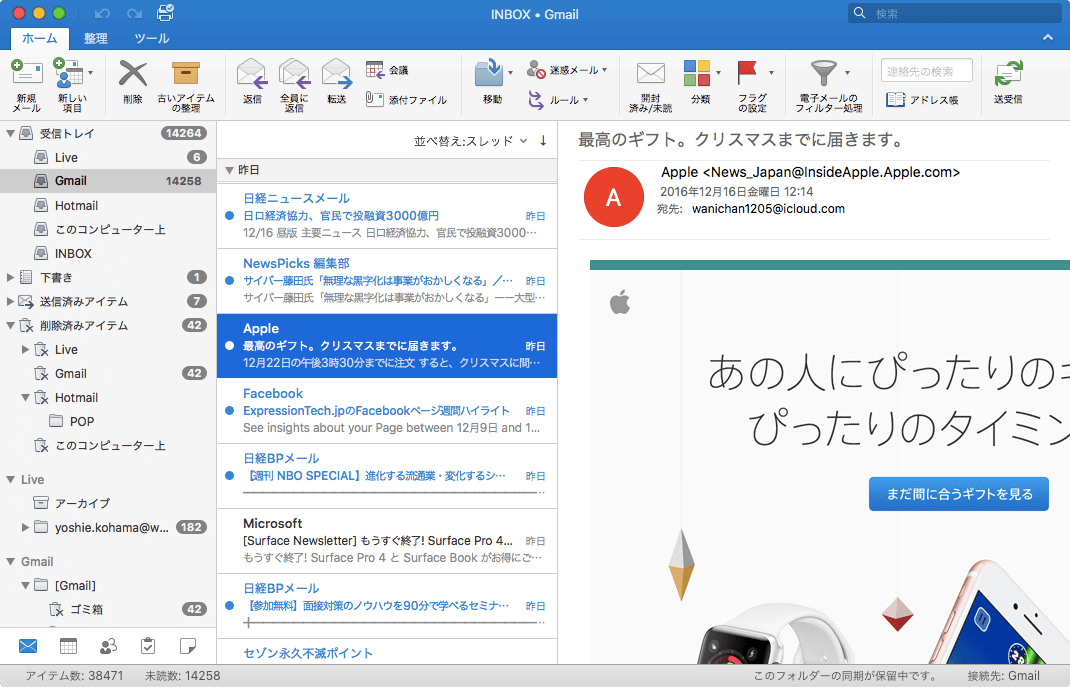I’m thinking about giving Outlook 2016 a try but I know we are not using the latest version of Exchange.
- Which versions of Exchange does Outlook 2016 support?
- How can I check which version I’m currently using?
- How do I configure an Exchange account in Outlook 2016?
As a general rule of thumb, any version of Outlook supports 5 different Exchange versions;
- 2 previous versions of Exchange
- its corresponding Exchange version
- 2 future versions of Exchange
So Outlook 2016 supports;
- Exchange 2010
- Exchange 2013
- Exchange 2016
- Exchange 2019 (vNext 1)
- Exchange vNext 2
Note: To determine your current version of Exchange from within Outlook see: Which Exchange version am I using?
Configuring an Exchange account in Outlook 2016
Outlook can not discover my mail server. How am I supposed to change the proxy settings so that I can use 2016 with my hosted exchange server? Here are the settings I need to change. This is all I get for options. Sorry to select OneNote but Outlook is not an option. I guess 99.9% now use outlook.com or something. In Exchange 2016 and 2019, MAPI over HTTP is enabled by default, when previously Outlook clients used Outlook Anywhere (RPC over HTTP). Exchange 2016 and 2019 require fewer name spaces for site-resilient solutions than Exchange 2010, reducing to two from the previously required seven namespaces. Select Done to start using Outlook 2016 for Mac. Improved authentication for existing Gmail users If you have a Google account added to Outlook for Mac earlier to the release of improved authentication experience for Google IMAP accounts, then you will need to sign-in using the browser to connect to your account.
The option to manually configure an Exchange account has been removed in Outlook 2016. This was a legacy configuration screen that was only needed for Exchange 2003 and previous and didn’t really serve a purpose anymore for later versions of Exchange.
Instead of using the manual configuration use the Auto Account Setup wizard.
Depending on your Update Channel of Office, you either only have to fill out your email address or need to provide your name, email address and password and your Exchange account will be automatically configured by the settings that are being pushed from the Autodiscover service of Exchange.
Don’t make it any harder for yourself than needed; The new Add Account dialog only requires your to fill out the email address of the account you want to add.

Even in the old Auto Account Setup dialog, you are only really required to fill out your email address to add an Exchange account.
Auto Account Setup fails
When Auto Account Setup fails, contact your Exchange administrator as it would indicate a configuration issue with the Autodiscover service in the Exchange environment.
Proper configuration of the Autodiscover and Outlook Anywhere service can be tested via the Microsoft Remote Connectivity Analyzer.
For more information about configuring the Autodiscover and Outlook Anywhere service see: Autodiscover: Some quick methods to get it working.
Exchange versions and Outlook support
Exchange support works in the same way, so Exchange 2016 will no longer support Outlook 2007.
The only exception to this was when you were connecting to an Office 365 Exchange 2016 server.

However, as of October 31, 2017, Office 365 dropped support for Outlook 2007 as well. This wasn’t a total surprise considering that support for Outlook 2007 itself stopped on October 10, 2017 already.
If talking about email clients, MS Outlook comes first in users mind as it is one of the most frequently used email application. It manages emails, contacts, calendars, tasks etc. and it is available for both Windows and Mac platforms. However, it acts as a personal information manager that deals with the user’s information in a proficient way. Sometimes Outlook application cannot start when OLM.DLL not found. In this situation, users need to re-install the application to resolve this problem. Hence, in this write-up, we will tell you how to rebuild Mac Outlook database in both 2011 and 2016 versions. First, let’s have a look at symptoms when Mac Outlook stops responding. Apart from this, we will also discuss the reasons which may result in corruption of Mac Outlook and requires to rebuild Outlook Database Mac 2016, 2011.
Top Reasons to Rebuild Outlook Database Mac 2016, 2011
There are multiple due to which Mac Outlook user need to rebuild Outlook database Mac 2011, 2016:
- Mac is slow and unresponsive
- Mac system terminates sudden or after a fix time-period
- Users are unable to locate and find the OLM data file
- Mac Outlook freezes or crashes repeatedly without any warning
- “Access denied” error message pops-up & emails are not accessible
- Error messages on the screen with error description & probable resolution
Download Outlook 2016 For Mac
One Stop Solution to Repair Mac Outlook 2019, 2016, 2011 Database
If you are facing issues with Mac Outlook database, then you can try SysTools Outlook Mac Database Recovery Tool for repair and rebuild purpose. It is a one stop solution which can help users to repair database of Mac Outlook 2019, 2016, 2011 or Outlook 365. It offers many unique features which makes the entire process hassle-free. Some of the top features are mentioned below:
- Performs deep level scan for recovery
- Option to export data in 10 file formats
- Feature to maintain Folder Hierarchy
- Filter data using Date & Category based filter
Learn How to Rebuild Outlook Database Mac 2016
In order to rebuild Outlook database Mac 2016, perform the below-mentioned steps via Outlook profile manager. It will easily manage and rebuild Mac Outlook 2016 profiles.
Step 1: Access Outlook Profile Manager
- First of all, you need to open the Finder menu and then go to the Applications option.
- Then, click on the Control in the Applications window.
- Now, you have to click on Microsoft Outlook & choose Show Package Contents.
- After this, navigate to Contents and then go to the Shared Support.
- Now, open the Outlook Profile Manager and access it.
Step 2: Create a New Profile for Outlook Mac 2016
- Once you have opened the Outlook Profile Manager, click on the + (plus) icon.
- Now, go to the text box and type a name for the new profile.
- Then, press Return option to create a new profile.
Step 3: Delete a Profile that Exists in Outlook Previously

- Now, you need to delete a profile in Outlook Profile Manager, click on the profile.
- After that, click on the – (minus) button.
- A confirmation dialog box will appear, click on the Delete button in the confirmation dialog box.

Step 4: Set a Default Profile
Microsoft Outlook 2016 For Mac
At last, you have to set the default profile, to rebuild Outlook database Mac 2016:
- Go to the Outlook Profile Manager & set a default profile by clicking on the profile to set as default option.
- Then, click on the Gear button and choose Set as default option.
Top Reasons to Rebuild Mac Outlook 2011 Database
There are many causes that lead Mac Outlook application inaccessible and require rebuilding Mac Outlook database in 2011 or 2016:
- Network failure or unexpected server issue
- When malware or virus attack on the network
- If Microsoft Exchange server gets crash Suddenly
- The Outlook for Mac crashes due to unexpected problems
- Corruption occurs during Outlook for Mac updates process
- If corruption found in the storage device where Outlook is installed
- Outlook for Mac is not installed properly or there is a disruption in the installation
Tips & Tricks to Rebuild Database in Mac Outlook 2011
To rebuild the Outlook for Mac 2011 Database to solve problems, you just need to follow the steps given below:
Step 1: Exit from All the Applications
- First of all, go to the toolbar that is available on top then click on the Application name menu and select the Quit option.
- Then, long press on the Command and Option keys. After that, press on the Escape button from the keyboard.
- Now, select the application you need to quit from the Force Quit application window.
- After that, just click on the Force Quit button. However, you cannot quit the Finder window.
- Finally, close the windows with the red circular icon that is available on the top left corner of the screen.
Step 2: Check the Available Space on the Hard disk
Now, to maintain the Mac Outlook database, you always need sufficient storage space. However, you need to have almost three times space as much space as the recent Outlook size is. Suppose, your Outlook database size is 1 GB, then you need to have 3GB space for efficiency.
Step 3: Create a Backup of Current Profile
As the name suggests, backup is important to avoid the risk of losing data. Therefore, you should create a backup of your current database of Mac Outlook 2011 by following these steps:
- Go to the Finder option, then click on Go option >> Home.
- After that, open the Documents folder >> Microsoft User data folder.
- Next, right click on the Office 2011 identities folder & select the Duplicate option to build a new folder. Exit from the Mac Outlook application.
- Now, you have created a backup of your current Outlook account database.
Step 4: Rebuild Mac Outlook 2011 Database Using Inbuilt Utility
- At first, exit all running applications from the system.
- Then, long press the Option key & start the Mac Outlook 2011 application or open the Application Folder.
- After that, click on the Microsoft Office 2011 then double-click on the Microsoft Database Utility app.
- Now, select the Database & click on Rebuild option.
- Now, a window will open that shows the recreating database progress. After completion of the operation, you will get the message “Your database was rebuilt successfully.”
- Start Outlook 2011 application and verify if the problem is resolved. If the problem is resolved, then you can access the Outlook application. But, if the problem still persists, then you need to create a new Identity or profile to resolve the issue.
Step 5: Create a New profile in Outlook 2011
- At first, exit all the applications. Then, long press on the Option key & click on the Outlook to open Microsoft database utility.
- After that, click on the (+) icon to add a new identity & enter the name of a new identity.
- Now, set the newly created Outlook profile as a default.
- Finally, you will recreate the new Outlook profile.
Conclusion
The Outlook for Mac application is an important email client from the user perspective and it supports 2011 and 2016 versions of Outlook. In case, if the database gets corrupt, Mac Outlook is unable to access, then users need to rebuild Mac Outlook database. Thus, using the above-discussed methods for both Outlook 2016 and 2011, you can recreate a new profile in Mac Outlook and resolve the error in no time.
Comments are closed.
